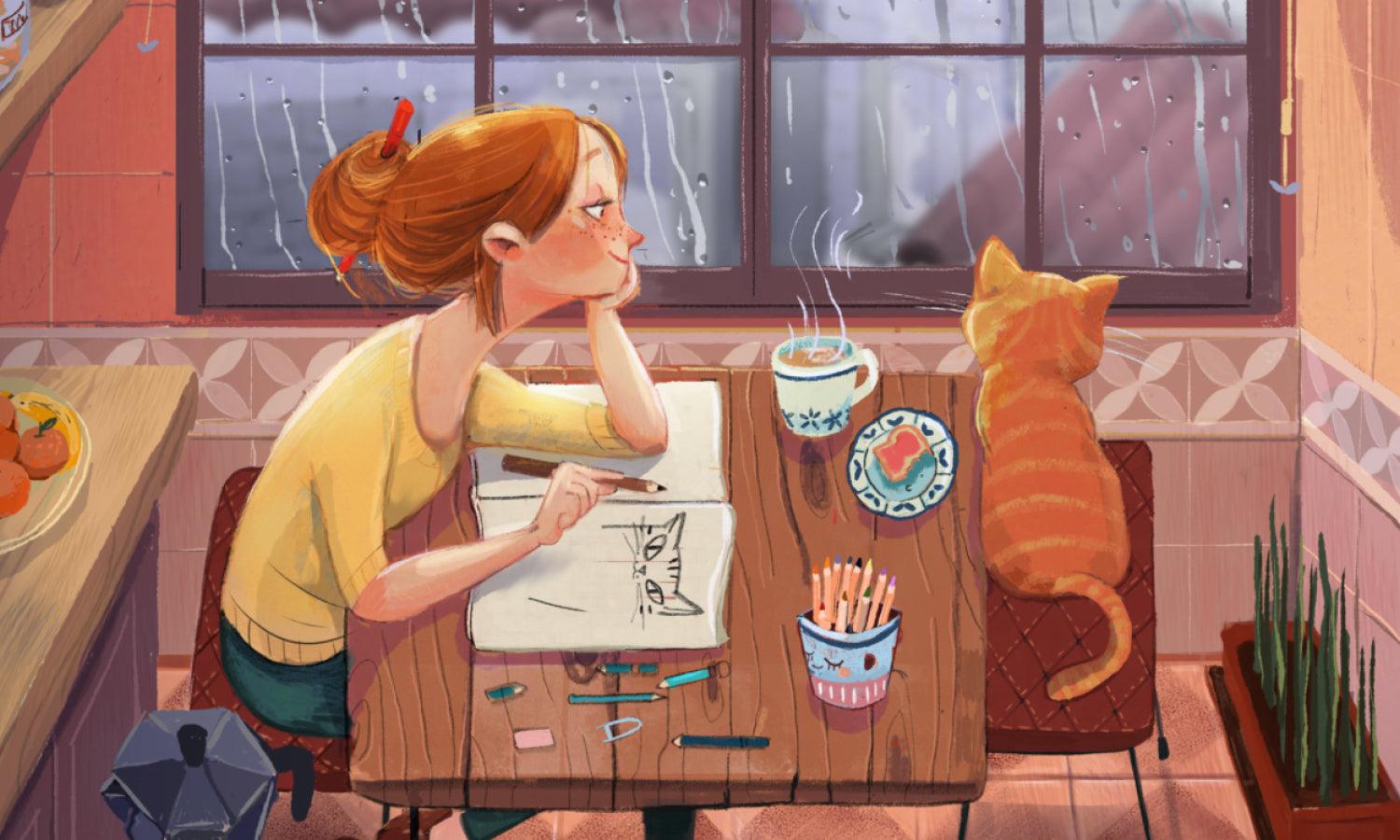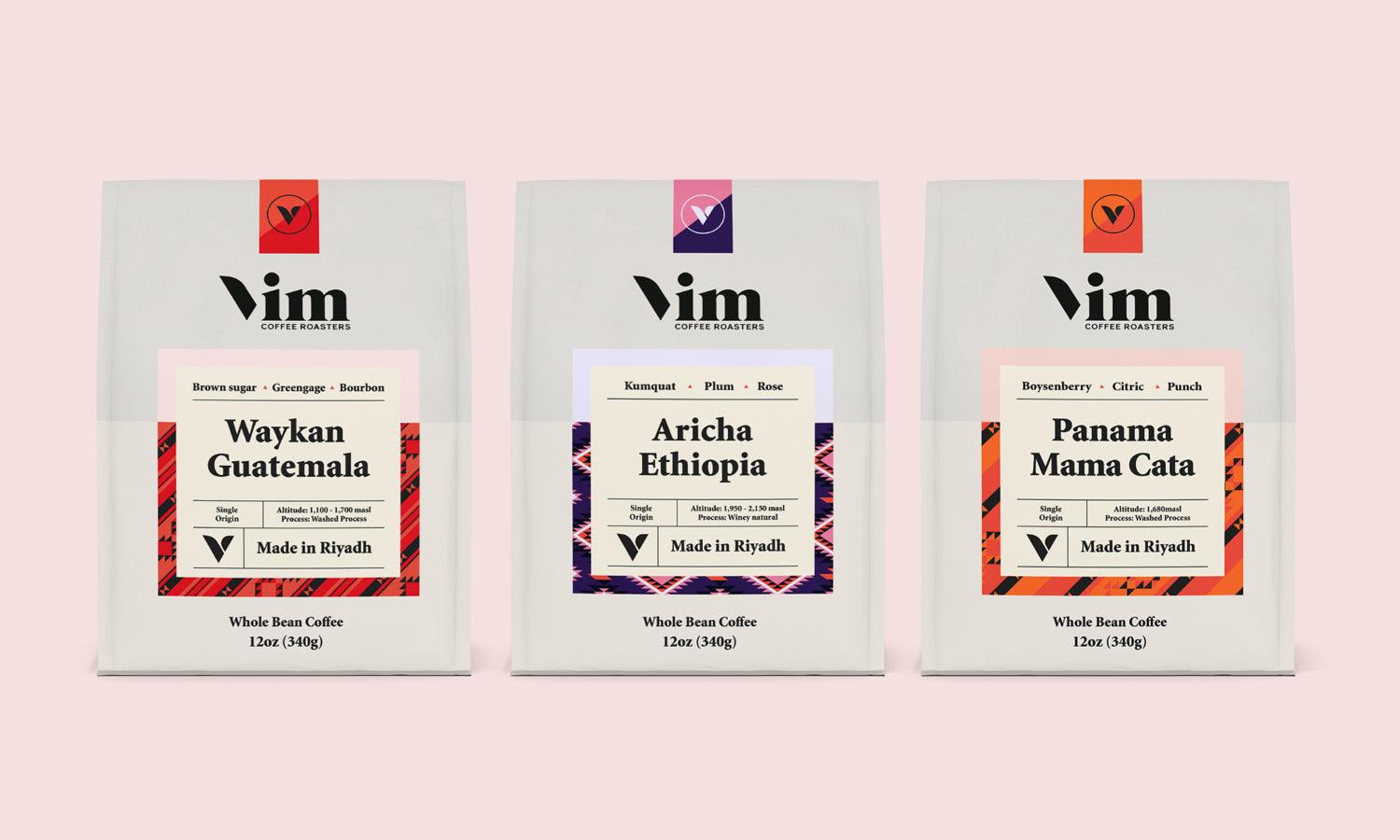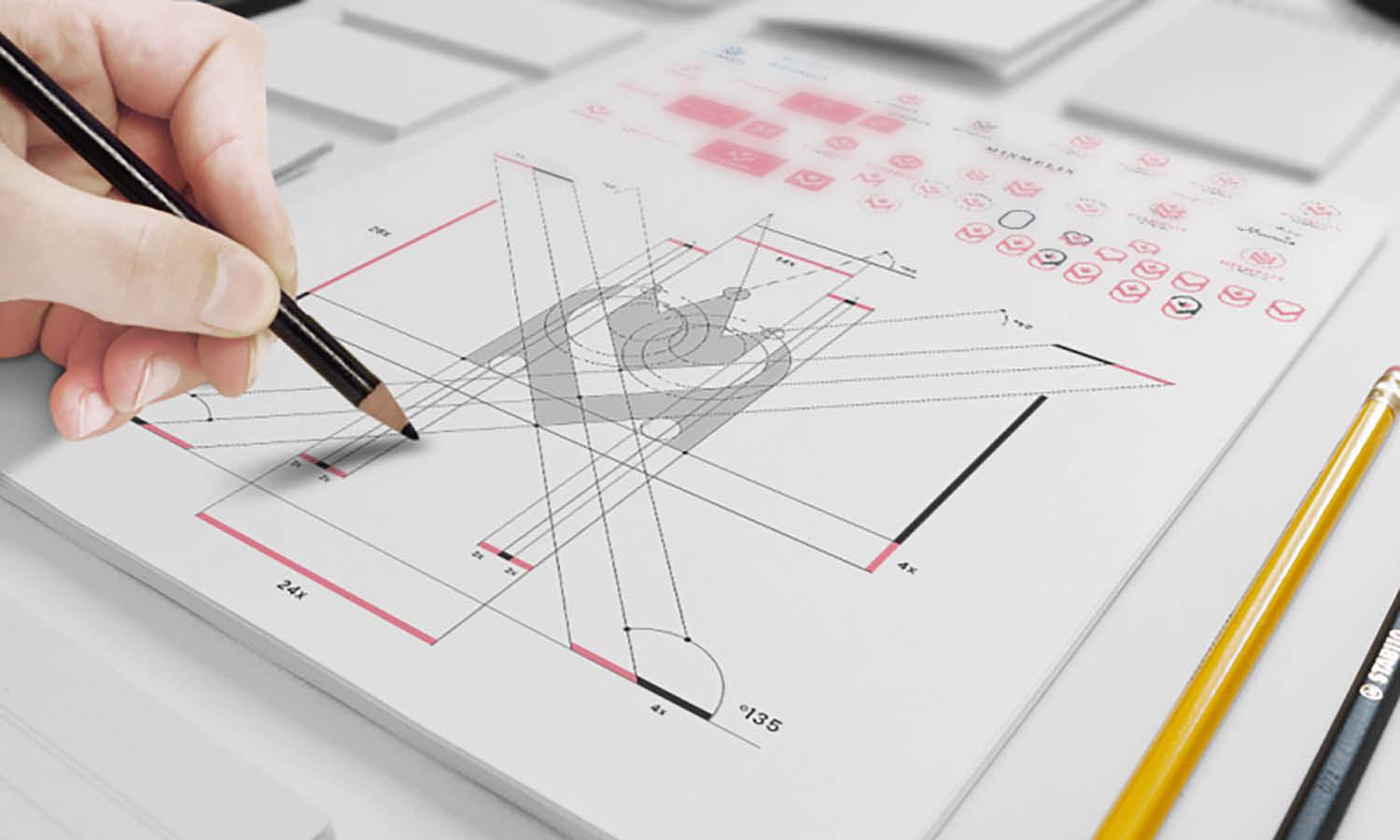10 Major Tips for Using Grids in Graphic Design

Source: David Rindlishbacher, Architecture Portfolio, Behance, https://www.behance.net/gallery/75528481/Architecture-Portfolio
In graphic design, grids serve as the invisible scaffolding that brings structure and balance to various elements within a layout. Whether you're crafting a sleek website, a corporate brochure, or an engaging poster, understanding how to effectively use grids can transform your design from ordinary to exceptional. This foundational tool not only guides designers in arranging content systematically but also ensures that the final product is aesthetically pleasing and functionally sound.
Embracing grids in graphic design does more than just impose order; it fosters creativity within constraints, allowing designers to explore compositions that are both innovative and coherent. By mastering grid systems, designers can achieve a harmonious balance between visual elements, enhancing the overall communication through clear, organized visual paths. As we delve into the major tips for using grids, remember that the power of a grid lies in its ability to create a seamless bridge between creativity and precision, making it an indispensable component of professional graphic design.
Understand the Purpose of Grids
Grids are fundamental tools in graphic design, primarily utilized to create a structured layout that enhances both the aesthetic appeal and functional efficiency of visual compositions. The purpose of grids extends beyond mere organization; they are crucial for establishing a rhythm and spatial harmony that guide the viewer’s eye across the design. By using grids, designers can systematically distribute elements—text, images, and other graphical components—ensuring that each piece maintains a coherent relationship with others.
This disciplined approach to layout does not stifle creativity but rather supports it, providing a framework within which designers can experiment and innovate without losing sight of consistency and alignment. Grids help in managing white space effectively, making the design appear more professional and easier to navigate. Whether you're working on a digital platform or in print, grids can adapt to various formats, enhancing readability and user experience.
Understanding the purpose of grids in graphic design is essential for any designer looking to create works that are not only visually engaging but also functionally robust. They are the silent partners in design that, when used wisely, can elevate a simple layout to a compelling piece of communication that resonates with its audience.
Choose the Right Grid System
Choosing the right grid system is pivotal in graphic design as it directly influences the layout's effectiveness and the overall visual communication of the project. The decision should be guided by the nature of the content and the medium of the design. For print materials like magazines and brochures, column grids offer flexibility and are ideal for extensive text layouts. On the other hand, modular grids are suitable for more complex designs that include a combination of text, images, and other visual elements, providing numerous compartments for versatile formatting.
For digital designs, such as websites and mobile applications, hierarchical grids are often preferred because they support varied content types and prioritize information effectively. Understanding the context of your design project helps in selecting a grid system that not only accommodates content but also enhances user interaction and accessibility.
It's also important to consider the scalability of the grid system, especially in responsive design. The grid should adapt seamlessly across different screen sizes and devices, maintaining consistency and quality of the design. Experimentation with different types of grid systems can also uncover unique solutions that challenge conventional layouts, thus pushing the boundaries of creative design.
Define Clear Margins and Gutters
Margins and gutters play a critical role in the grid systems used in graphic design. Margins are the spaces between the content and the edges of the format—whether it’s a printed page or a digital screen—while gutters are the spaces between columns within the content area. Defining clear margins and gutters is essential for creating a visually appealing and easy-to-navigate layout. They help to establish a clean and organized space that enhances the readability and overall aesthetic of the design.
Properly set margins and gutters ensure that the content is not crammed at the edges, which can be visually displeasing and hard to follow. They provide breathing room for the content, making it more digestible and allowing the viewer's eye to rest. In terms of gutters, the width should be sufficient to clearly define each column but not so wide as to disconnect the related content across columns. The balance between margins and gutters is crucial; it must be harmonious enough to support both the textual content and the design elements, facilitating an uninterrupted flow of information.
Incorporating ample margins and precise gutters in your grid layout not only structures the content effectively but also contributes to a design’s clarity and effectiveness, making these elements foundational in the realm of grids in graphic design.

Source: Hrvoje Grubisic, Solitaire Digital - Company Website, Behance, https://www.behance.net/gallery/113608519/Solitaire-DigitalCompany-Website
Use the Rule of Thirds for Balance
The Rule of Thirds is a powerful compositional technique in graphic design, used to create visually appealing and balanced layouts. This rule involves dividing the design into three horizontal and three vertical segments, creating a grid of nine equal parts. By placing the most important elements along these lines or at their intersections, designers can achieve a more natural and engaging composition.
The Rule of Thirds helps in guiding the viewer’s eye to the key components of the design, making it particularly useful for projects that require a strong focal point. This method not only enhances the aesthetic value but also the functional aspect of the design, as it organizes the space, guiding the viewer’s interactions in a predictable yet pleasing manner.
Applying the Rule of Thirds in grid-based design can dramatically improve the visual balance, ensuring that the elements are aligned in a way that is both dynamic and harmonious. It allows for a more creative arrangement of text and images, avoiding the monotony of centrally aligned or evenly spaced elements. The strategic use of this rule can effectively distribute the visual weight across the layout, which enhances both the design’s readability and its ability to communicate effectively.
Leverage Asymmetry for Visual Interest
Asymmetry in graphic design, when used skillfully within grid systems, can create a compelling visual interest that attracts and retains the viewer's attention. Asymmetric layouts break away from the conventional alignment and predictable patterns, offering a dynamic and fresh perspective. This approach involves intentionally unbalancing the visual elements within the grid to evoke emotions and convey messages more powerfully.
By shifting the balance of images, text, and space, designers can direct the viewer's eye across the design in a more engaging manner. Asymmetry can be achieved by varying the size of elements, adjusting their placement on the grid, or playing with color contrasts and text alignments. These variations help highlight key information and guide the viewer through the content organically.
Utilize Columns to Structure Content
Columns are a fundamental aspect of grid systems in graphic design, playing a crucial role in structuring content both visually and functionally. By dividing the space into vertical bands, columns help organize elements in a clean and orderly fashion, enhancing both the layout's readability and aesthetic appeal. This method is particularly effective in projects like magazines, newspapers, and websites, where information needs to be presented clearly and concisely.
Using columns allows designers to create a logical flow of information, guiding the reader’s eye through the text in a predictable manner. It also facilitates the integration of text with images and other multimedia elements, providing a framework that supports a variety of content types without sacrificing the design’s overall unity. Moreover, columns can be adjusted in width and number to accommodate different kinds of content, making them incredibly versatile.
The adaptability of column grids makes them ideal for responsive design. As screen sizes vary, the columns can be reconfigured to ensure that the content remains balanced and accessible on any device. This flexibility is essential in today’s multi-platform landscape, where user engagement depends heavily on the visual and functional consistency across different media.
Experiment with Modular Grids for Flexibility
Modular grids are a versatile tool in graphic design, offering a high degree of flexibility while maintaining order within a layout. These grids consist of multiple rows and columns that break the space into smaller modules, which can be used to place design elements independently yet cohesively. This grid type is ideal for complex layouts that require detailed organization, such as user interfaces, infographics, and multi-section print designs.
The primary advantage of modular grids lies in their ability to accommodate a diverse range of content types within a single coherent framework. Designers can align text, images, and other elements precisely, ensuring that each component interacts harmoniously with others. This precise alignment enhances the visual impact and functionality of the design, making information easier to digest and the layout more visually engaging.

Source: Paloma D'Urbano, Afiche Tipografico | HAIKU, Behance, https://www.behance.net/gallery/112143089/Afiche-tipografico-HAIKU
Align to a Baseline Grid for Perfect Text Placement
A baseline grid is essential in graphic design for achieving flawless text alignment, which enhances both the readability and the professional appearance of the layout. This type of grid system aligns all the text lines across a page or a series of pages, providing a visual guide that ensures consistent vertical spacing and alignment of text elements, such as headlines, paragraphs, and captions.
Using a baseline grid is particularly effective in multi-column and text-heavy designs, such as editorial layouts, books, and websites. It helps maintain rhythm and cohesiveness in the text structure, preventing disjointed text blocks that can disrupt the viewer’s reading flow. This consistency is crucial for conveying a sense of order and stability, making the content more digestible and aesthetically pleasing.
Designers can adjust the spacing of the baseline grid based on the text size, leading, and overall design style to optimize legibility and visual harmony. The grid acts as a scaffold that supports various typographic elements, allowing them to coexist in a balanced layout. Aligning text to a baseline grid not only standardizes the vertical spacing but also integrates text with other design elements like images and charts, ensuring that all parts of the layout interact seamlessly.
Don’t Overuse Grids
While grids are a powerful tool in graphic design, over-reliance on them can make a layout feel rigid and uninspired. It’s important for designers to remember that grids are meant to serve as a guide—not a constraint. Flexibility in design allows for more creative and impactful communication, which can sometimes mean breaking away from the grid to achieve a more dynamic composition.
Overusing grids can stifle creativity by forcing all design elements into a strict, uniform arrangement, which might not always serve the content or the intended message effectively. It is essential to balance the structure provided by grids with the need for visual interest and spontaneity that captivates the audience. Designers should feel free to experiment with layouts, occasionally stepping outside the grid to emphasize particular elements or to inject a sense of motion and energy into the design.
For instance, strategically placing some elements off-grid can draw attention to them, adding emphasis and creating focal points. This approach can be particularly effective in advertising, poster design, and web interfaces where capturing the viewer’s attention quickly is crucial.
Keep It Consistent
Consistency is paramount in employing grids in graphic design, as it establishes a cohesive look and feel across various elements of a project. Consistent use of grids ensures that all parts of the design are aligned and uniformly distributed, which enhances the overall visual narrative and makes the content more accessible and easier to digest.
When consistency is maintained, it provides a reliable framework that supports various design elements, from typography to imagery. This reliability not only improves the aesthetic quality but also boosts usability, especially in multi-page or complex digital designs. It helps in building a visual connection between different sections or pages, which is crucial for brand recognition and user navigation.
Grids serve as an underlying structure that should subtly guide the design process without limiting creativity. By sticking to a consistent grid, designers can explore various layouts and styles within a defined boundary, ensuring that the end product is both innovative and coherent. This consistency in grid application aids in reinforcing the design’s purpose, making sure that all elements are unified towards the same goal.
Conclusion
In the dynamic field of graphic design, grids are invaluable tools that provide structure and balance, enabling designers to produce work that is both aesthetically pleasing and functionally effective. By mastering the use of grids, you can enhance your designs with precision, ensuring that every element serves a purpose and contributes to the overall message. Whether you're designing a print advertisement, a digital interface, or anything in between, embracing grids in your creative process can lead to clearer, more engaging, and ultimately more successful designs.
Let Us Know What You Think!
Every information you read here are written and curated by Kreafolk's team, carefully pieced together with our creative community in mind. Did you enjoy our contents? Leave a comment below and share your thoughts. Cheers to more creative articles and inspirations!
















Leave a Comment